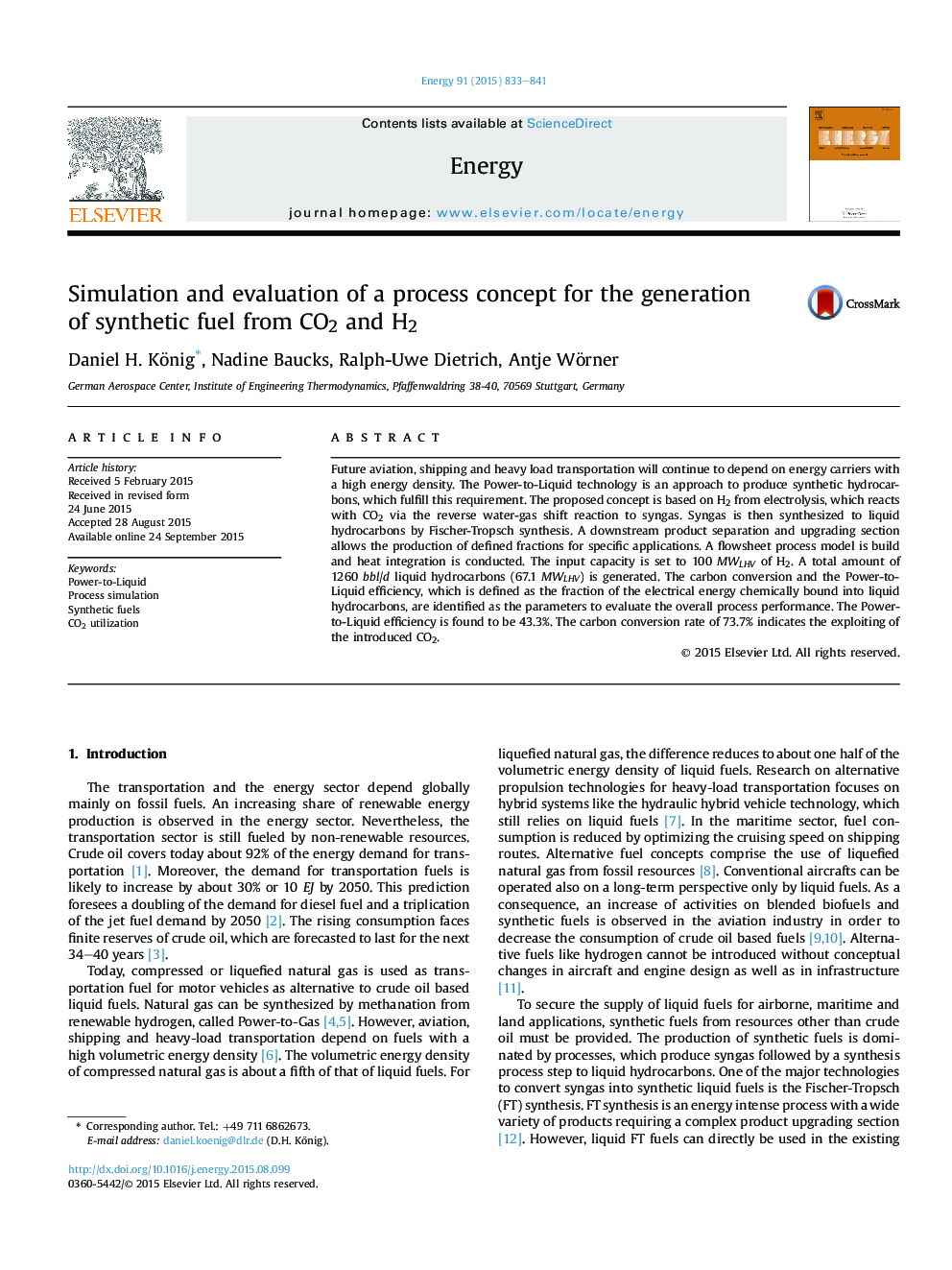| Article ID | Journal | Published Year | Pages | File Type |
|---|---|---|---|---|
| 1731539 | Energy | 2015 | 9 Pages |
•Process model of the generation of synthetic fuels from CO2, power and H2O developed.•100 MWLHV of H2 yields 1260 bbl/d of liquid hydrocarbon product.•A Power-to-Liquid efficiency of 43.3% arises.•Heat integration can reduce the energy losses to 25.6%.
Future aviation, shipping and heavy load transportation will continue to depend on energy carriers with a high energy density. The Power-to-Liquid technology is an approach to produce synthetic hydrocarbons, which fulfill this requirement. The proposed concept is based on H2 from electrolysis, which reacts with CO2 via the reverse water-gas shift reaction to syngas. Syngas is then synthesized to liquid hydrocarbons by Fischer-Tropsch synthesis. A downstream product separation and upgrading section allows the production of defined fractions for specific applications. A flowsheet process model is build and heat integration is conducted. The input capacity is set to 100 MWLHV of H2. A total amount of 1260 bbl/d liquid hydrocarbons (67.1 MWLHV) is generated. The carbon conversion and the Power-to-Liquid efficiency, which is defined as the fraction of the electrical energy chemically bound into liquid hydrocarbons, are identified as the parameters to evaluate the overall process performance. The Power-to-Liquid efficiency is found to be 43.3%. The carbon conversion rate of 73.7% indicates the exploiting of the introduced CO2.
